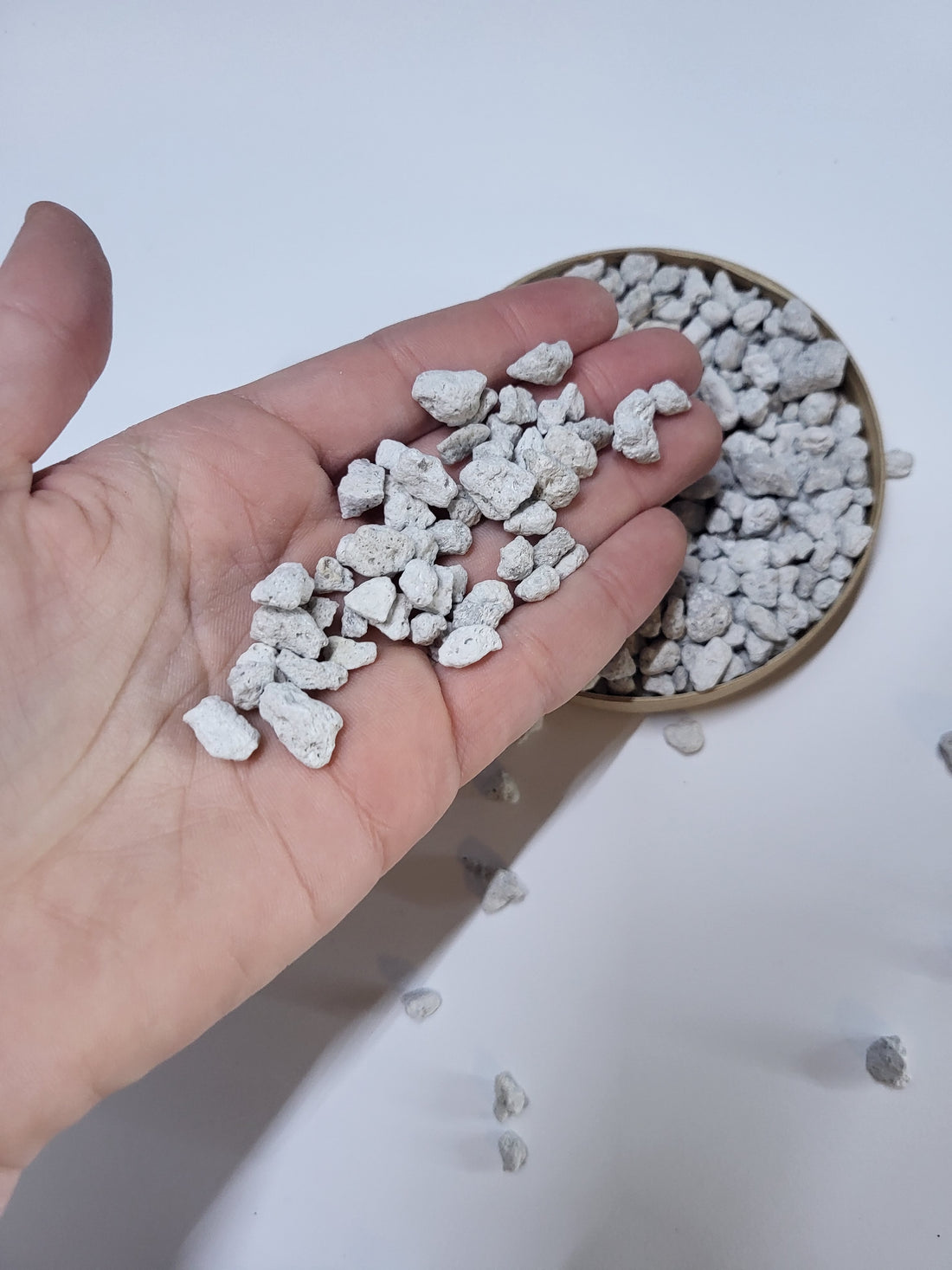When it comes to improving soil structure, aeration, and drainage in your garden, two popular choices are pumice and perlite. These lightweight, porous materials offer numerous benefits, but they also have their drawbacks. In this blog, we'll explore the pros and cons of pumice and perlite, helping you make an informed decision about which soil amendment is best suited for your gardening needs.
Pumice: The Pros and Cons
Pros of Using Pumice:
-
Improved Aeration: Pumice's porous structure creates air pockets in the soil, promoting better oxygenation for plant roots. This improved aeration can lead to healthier root systems and more vigorous plant growth.
-
Enhanced Drainage: Pumice is excellent at preventing waterlogged soil, which is crucial in areas with heavy rainfall or soils prone to compaction. It reduces the risk of root rot and other moisture-related issues.
-
Water Retention: Surprisingly, pumice also retains water. It acts as a moisture reservoir, slowly releasing water to plant roots during dry periods. This provides a safety net for your plants, especially in drought conditions.
-
pH Neutral: Pumice is pH neutral, meaning it won't significantly alter your soil's acidity levels. This makes it a versatile choice for maintaining or adjusting soil pH as needed.
Cons of Using Pumice:
-
Cost: Pumice can be more expensive than perlite, depending on your location and supplier. However, its durability and long-term benefits often make it a cost-effective investment.
-
Weight: Pumice is heavier than perlite, which can make handling and transportation more cumbersome.
Perlite: The Pros and Cons
Pros of Using Perlite:
-
Lightweight: Perlite is incredibly light, making it easy to handle and transport. This is especially beneficial for container gardening.
-
Excellent Aeration: Perlite offers good aeration for plant roots, preventing soil compaction and allowing for healthy root development.
-
Affordability: Perlite is typically more budget-friendly than pumice, making it an economical choice for gardeners.
Cons of Using Perlite:
-
Poor Water Retention: Perlite has little to no water-holding capacity, which means it dries out quickly. This may require more frequent watering and fertilizing.
-
Low Nutrient Value: Perlite does not contribute any nutrients to the soil. Gardeners must rely on other sources of nutrition for plants.
-
Environmental Impact: The mining and processing of perlite can have environmental consequences, depending on the source and production methods.
Choosing the Right Amendment for Your Garden
The choice between pumice and perlite largely depends on your gardening needs and goals. If you need better water retention and can accommodate the added weight, pumice may be the better choice. However, if lightweight, affordable aeration is what you're after, perlite might be your best bet.
In many cases, gardeners use a combination of both pumice and perlite to take advantage of their respective strengths while mitigating their weaknesses. Ultimately, the choice should align with your gardening objectives, the specific needs of your plants, and your local environmental considerations. With the right selection, your garden will thrive, and you'll enjoy the beauty and productivity of your green oasis.

